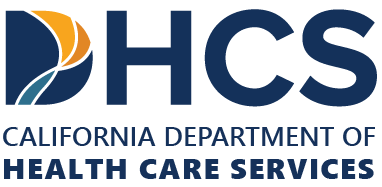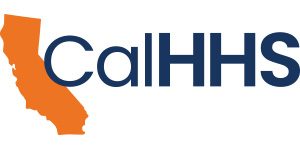System of Care for Children and Youth





About
System Profiles
Too often we are focused on delivering specific programs or services within our government silos that we do not take the time to look at the how our programs and services complement one another to best address the needs of the children and youth we are serving. Siloed systems yield siloed responses.
As a resource to state, county, and local staff, we developed system profiles that provide an overview of the services offered by our various systems that all serve children and youth.
This is our compendium of resources available to children and youth served by are various systems. The system profiles outline how eligibility is determined, what the denial appeal processes entail, how the system interacts with other systems or programs, how information is shared, and how referrals are made.
AB 2083 MOU Guidance
- AB 2083 MOU Guidance Information Notice
- AB 2083 MOU Guidance
- AB 2083 Technical Assistance Information Notice
- Guidance on Tribal Participation in System of Care
Over the course of the last year, the state and county teams have made an impressive amount of progress toward implementation of AB 2083. At the local level, early AB 2083 implementation efforts have proven to be very useful as we partner to address the unprecedented challenges of COVID-19.
More than ever, meeting the needs of our children and families requires our continued collaboration as interagency teams. In facing the colliding challenges of the COVID-19 pandemic and the resulting budget impacts, multi-agency partnership will provide crucial opportunities for maximizing the impact that our services and resources have in supporting the safety and wellbeing of the children and families we all serve.
Many county and local agencies have made important strides in establishing local interagency leadership teams and developing key components of their MOUs. Many local interagency teams have observed that MOUs provide a critical infrastructure to support effective partnership. To the extent possible, we strongly encourage local partner agencies to continue these efforts. However, given the practical urgencies all of us are attending to during this time, CDE and CHHS have agreed to delay the submission requirements of the finalized MOUs and will establish a new timeline at a future date.
State level interagency planning efforts have continued during this time, and the Children and Youth System of Care State Team has begun holding mutually developed monthly technical assistance webinars to support the ongoing planning efforts for local AB 2083 implementation using System of Care principles. View more information about how to access the webinars.
Our Children and Youth System of Care State Team remains dedicated to support county efforts for innovative and collaborative approaches to addressing the many practical and financial challenges of this time. This state team will be initiating two new county/local agency technical assistance processes, one dedicated to assisting with individual cases and the second to support MOU development. A formal communication of these processes is anticipated for release next month. In the meantime, local partners can reach the state team at systemofcare@dss.ca.gov and CDSS continues to provide child specific technical assistance to counties through ccr@dss.ca.gov.
Thank you for all your hard work and collaboration on behalf of the child and families we serve, it is making a difference.
May 26, 2020
AB 2083 MOU Status
The following counties have completed their MOUs:
- Alameda
- Alpine
- Amador
- Butte
- Calaveras
- Colusa
- Contra Costa
- Del Norte
- El Dorado
- Fresno
- Glenn
- Humboldt
- Imperial
- Inyo
- Kern
- Kings
- Lake
- Lassen
- Los Angeles
- Madera
- Marin
- Mariposa
- Mendocino
- Merced
- Modoc
- Mono
- Monterey
- Napa
- Nevada
- Orange
- Placer
- Plumas
- Riverside
- Sacramento
- San Benito
- San Bernardino
- San Diego
- San Francisco
- San Joaquin
- San Luis Obispo
- San Mateo
- Santa Barbara
- Santa Clara
- Santa Cruz
- Shasta
- Sierra
- Siskiyou
- Solano
- Sonoma
- Stanislaus
- Sutter
- Tehama
- Trinity
- Tulare
- Tuolumne
- Ventura
- Yolo
- Yuba
Exceptional System of Care Practices
The California Children and Youth System of Care State Team (CYSOCST), recently reviewed submitted Memorandum Of Understandings (MOUs) to identify and highlight examples of exceptional System of Care practices. Identifying such practices may add value to other counties system of care practices and support partner agencies to further implement MOUs in counties across the state.
MOUs were selected based on a review of each of the required AB 2083 MOU components, for meeting, exceeding, or indicating an exemplary element in implementing the local Children and Youth System of Care. The three MOUs highlight practices that improve and promote collaboration and communication across systems to meet the needs of children, youth and families and can be a model for system partners.
Based on the results of the review the following three counties were selected:
AB 2083 Implementation
Our System of Care work has been accelerated by the implementation of Assembly Bill 2083 (Chapter 815, Statutes of 2018), which requires each county to develop and implement a Memorandum of Understanding outlining the roles and responsibilities of the various local entities that serve children and youth in foster care who have experienced severe trauma.
The legislation is focused on the child welfare system, but can and must be expanded to look at children and youth served by various other systems.
The legislation calls for the establishment of a Joint Interagency Resolution Team to provide guidance, support, and technical assistance to counties with regard to trauma-informed care to foster children and youth.
We have identified the mission of the State Resolution Team to be:
- Promote collaboration and communication across systems to meet the needs of children, youth and families;
- Support timely access to trauma-informed services for children and youth; and
- Resolve technical assistance requests by counties and partner agencies, as requested, to meet the needs of children and youth.
The legislation calls for the following deliverables:
MOU Guidance [WIC 16521.6(b)(1)(B)(i)]
The primary roles of the joint interagency resolution team shall be to develop guidance to counties, county offices of education, and regional centers with regard to developing the memoranda of understanding required by this section, to support the implementation of those memoranda of understanding, and to provide technical assistance to counties to identify and secure the appropriate level of services to meet the needs of children and youth in foster care who have experienced severe trauma.
Process to request Technical Assistance from State Resolution Team [WIC 16521.6(b)(1)(B)(ii)]
The agencies shall ensure that a process is developed for counties and partner agencies that are parties to the memorandum of understanding to request interdepartmental technical assistance from the joint interagency resolution team.
Identify Gaps in Placement Types, Services, or Other Issues [WIC 16521.6(b)(1)(B)(ii)(2)(A)]
No later than January 1, 2020, the joint interagency resolution team, in consultation with county agencies, service providers, and advocates for children and resource families, shall review the placement and service options available to county child welfare agencies and county probation departments for children and youth in foster care who have experienced severe trauma and shall develop and submit recommendations to the Legislature addressing any identified gaps in placement types or availability, needed services to resource families, or other identified issues.
Develop a Multiyear Plan for Increasing Capacity [WIC 16521.6(b)(1)(B)(ii)(3)]
No later than June 1, 2020, the joint interagency resolution team, in consultation with county agencies, service providers, behavioral health professionals, schools of social work, and advocates for children and resource families, shall develop a multiyear plan for increasing the capacity and delivery of trauma-informed care to children and youth in foster care served by short-term residential therapeutic programs and other foster care and behavioral health providers.
- AB 2083 – Multiyear Plan for Increasing Capacity
- Supplementary Analysis to the Multiyear Plan
- APPENDIX A. AB2083
- APPENDIX B. Data Dictionary
- APPENDIX C. Methods
Track and Report Foster Youth who Receive Technical Assistance [W&I Code Section 16521.6 (b)(2)(A)(5)]
The joint interagency resolution team shall track and report deidentified information of children and nonminor dependents in foster care who have been assisted to preserve, or secure new, intensive therapeutic options. This information shall be posted on the internet website of the California Health and Human Services Agency beginning July 1, 2022, shall be updated annually, and shall include the number of children and nonminor dependents served through its technical assistance process, characteristics of individuals served, and as applicable, local, and statewide systemic issues identified by the team.
- AB 2083 System of Care Annual Technical Assistance Data Report 2021
- AB 2083: Children and Youth System of Care Annual Technical Assistance Data Report 2022
- AB 2083: Children and Youth System of Care Annual Technical Assistance Data 2023
- AB 2083: Children and Youth System of Care Annual Technical Assistance Data 2024
Partner Resources
- As we develop and issue resources we will post them on our website here so that it can be leveraged by our various partners. We will iterate on these resources as we learn collectively.
- Children and Youth System of Care State Technical Assistance Team
- MOU Part 1: Interagency Leadership Team
- MOU Part 2: Integrated Core Practice Model
- MOU Part 3: Data and Information Sharing
- MOU Part 3: Data and Information Sharing (Part 2)
- MOU Part 4: Screening, Assessment and Entry to Care
- MOU Part 5: Child and Family Teaming
- MOU Parts 6 and 7: Interagency Placement Committee and Alignment Coordination of Services
- MOU Part 8: Staff Recruitment Training and Coaching For Leadership Review
- MOU Part 9: Financial Resource Management
- MOU Part 10: Dispute Resolution Process
- MOU Part 11: Resource Families and Therapeutic Foster Care Services
- Open Forum for Children and Youth System of Care Implementation
- AB 2083 Stakeholder Engagement
- AB 153 Tribal Consultation Presentation

